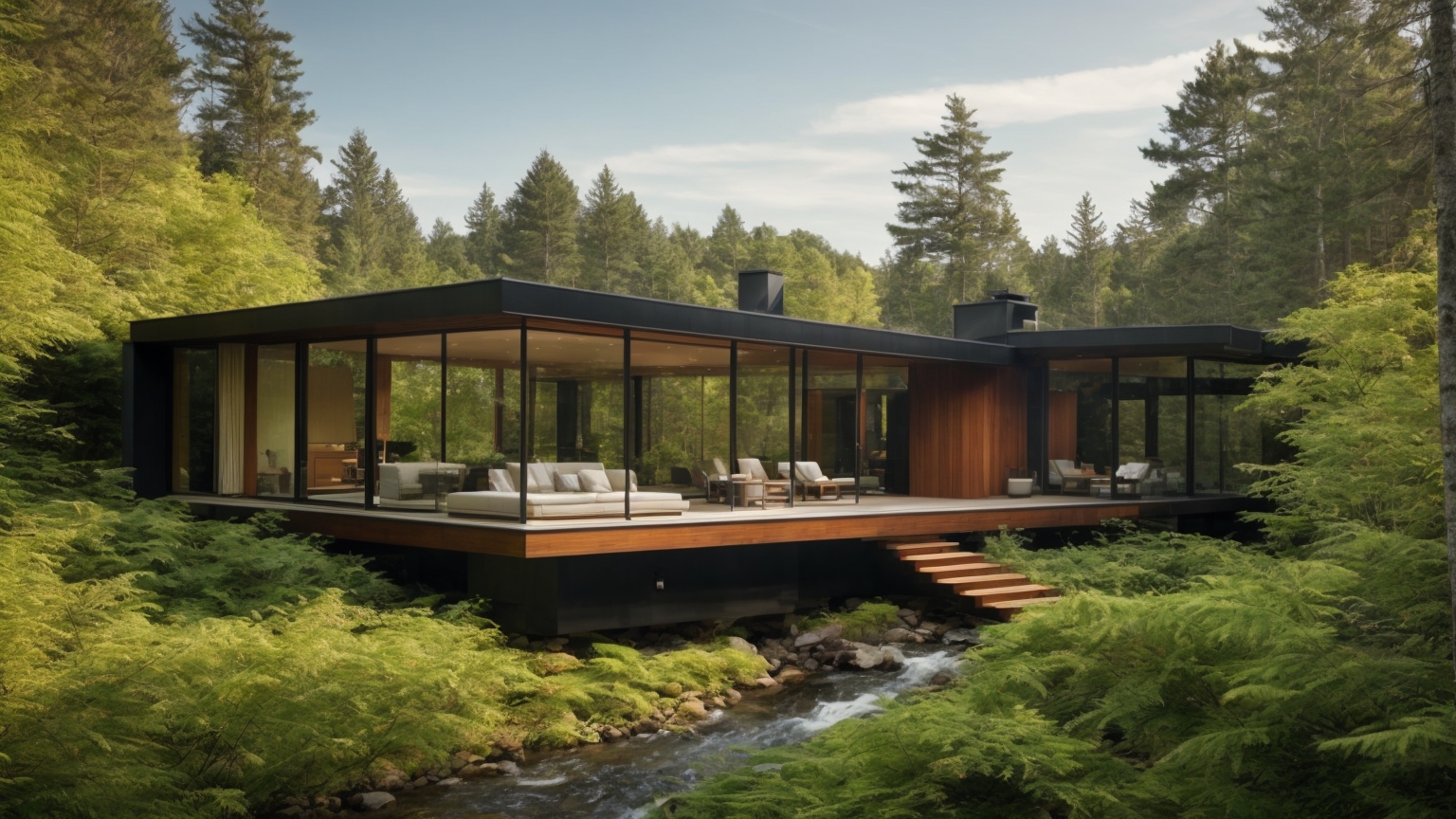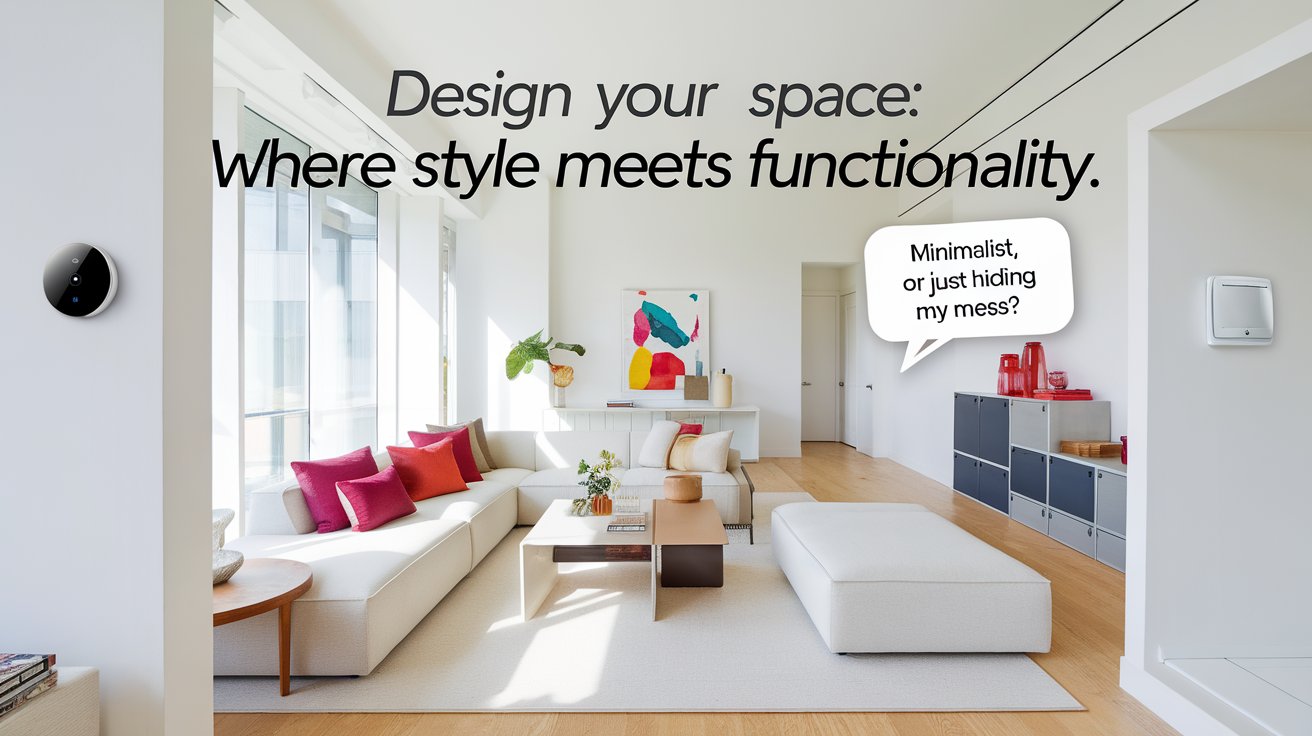Introduction
Sustainable home design is not just a trend for 2024—it’s a movement that emphasizes eco-friendly living spaces and reduced environmental impact. Homeowners are increasingly incorporating energy-efficient appliances, renewable energy systems, and sustainable materials like bamboo and reclaimed wood. This shift is driven by a growing awareness of climate change and the need for environmentally responsible choices. Sustainable homes not only reduce carbon footprints but also create healthier, more comfortable living spaces.
By embracing biophilic design and innovative technologies, homeowners can transform their homes into modern, efficient havens that support a sustainable lifestyle. From solar panels to green walls, these elements reflect a commitment to the environment while enhancing everyday living. This guide delves into key sustainable home trends, materials, and energy solutions to help homeowners build a future-friendly home that aligns with their values.
Key Takeaways
- Sustainable home design in 2024 emphasizes eco-friendly materials and energy-efficient technologies for reduced environmental impact.
- Incorporating renewable energy sources, like solar panels and geothermal systems, can lower energy costs and carbon footprints.
- Biophilic design enhances living spaces by integrating natural elements that improve air quality and reduce stress.
- Choosing materials such as reclaimed wood and bamboo promotes sustainability while offering durability and unique aesthetics.
- Smart home technology helps manage energy consumption efficiently, supporting modern sustainable living.
- Simple upgrades, like low-VOC paints and better ventilation, significantly improve indoor health and environmental responsibility.
Top Sustainable Home Design Trends for 2024
Sustainability continues to be at the forefront of home design, with 2024 showcasing innovative trends that prioritize eco-friendliness and energy efficiency. From biophilic design elements like green walls to advanced smart home technologies, homeowners are increasingly drawn to features that reduce their carbon footprint while enhancing comfort. The use of natural materials such as bamboo, reclaimed wood, and rammed earth is becoming mainstream, offering both aesthetic appeal and environmental benefits. Additionally, passive heating and cooling methods, coupled with energy-efficient appliances, ensure that homes can minimize resource consumption. These trends reflect a global shift toward embracing sustainable lifestyles and creating spaces that are both functional and environmentally conscious.

Key Features of Sustainable Home Design in 2024
Sustainable home design in 2024 emphasizes a blend of functionality and eco-consciousness. Features like smart home technology for energy management, passive heating and cooling systems, and eco-friendly materials such as reclaimed wood are gaining traction. These elements not only enhance the home’s efficiency but also align with the global push toward reducing environmental impact. By incorporating these trends, homeowners can enjoy both modern comfort and sustainability.
The Shift Towards Green Architecture
Green architecture is reshaping the built environment by integrating sustainability into the core of home design. Architects are focusing on biophilic elements, renewable energy systems, and materials that minimize carbon footprints. This shift reflects a growing demand for homes that balance aesthetics, functionality, and environmental responsibility. The result is a living space that supports a greener, more sustainable future.
Simple Ways to Start Your Sustainable Home Journey
1. Conduct a Home Energy Audit
Assess your current energy usage and identify areas for improvement. Professional audits or DIY tools can help pinpoint inefficiencies and suggest solutions.
2. Switch to Energy-Efficient Lighting
Replace traditional bulbs with LED lights, which last longer and consume significantly less energy, reducing electricity bills.
3. Install Low-Flow Fixtures
Low-flow faucets, showerheads, and toilets conserve water without sacrificing performance, saving water and reducing utility costs.
4. Incorporate Indoor Plants
Add houseplants to improve air quality and create a natural ambiance, supporting biophilic design principles.
5. Use Recycled or Sustainable Materials
Opt for reclaimed wood, recycled metal, or bamboo for renovations or furniture, contributing to eco-friendly living.
6. Upgrade to Smart Thermostats
Control heating and cooling more efficiently with smart thermostats, reducing energy waste and saving money.

How to Incorporate Eco-Friendly Materials in Your Home
Choosing eco-friendly materials for your home not only reduces environmental impact but also contributes to a healthier living space. Materials like reclaimed wood, bamboo, and recycled metal are excellent alternatives to traditional options, offering durability and charm. Rammed earth and adobe are also gaining popularity due to their thermal efficiency and unique aesthetic. When renovating or building, prioritize materials with low environmental footprints and certifications from recognized bodies like the FSC. Additionally, using materials like low-VOC paints and natural textiles can significantly enhance indoor air quality. These choices align with a growing movement toward environmentally responsible home design, ensuring a sustainable future.

Choosing the Right Sustainable Materials
Selecting materials like bamboo, recycled metal, and rammed earth can greatly reduce the environmental impact of a home. These options offer durability and a unique visual appeal while being resource-efficient. Researching certifications, such as FSC approval for wood products, can help ensure the materials meet eco-friendly standards.
Benefits of Low-VOC and Recycled Materials
Low-VOC paints and recycled materials not only contribute to a sustainable lifestyle but also enhance the home’s indoor environment. These options reduce harmful emissions, improve air quality, and often come with added benefits like durability and cost-effectiveness. Incorporating such materials ensures a home is both eco-friendly and health-conscious.
Case Study: Transforming a Traditional Home into a Sustainable Haven
In 2023, a homeowner in California decided to upgrade their 1980s-built home to align with sustainable living practices. The project began with a comprehensive energy audit, which revealed inefficiencies in insulation and energy use. The homeowner installed energy-efficient windows and added solar panels to generate renewable energy. To conserve water, they incorporated a rainwater harvesting system and replaced traditional fixtures with low-flow alternatives.
The renovation also emphasized sustainable materials. Reclaimed wood was used for flooring, while bamboo featured prominently in cabinetry and furniture. Biophilic elements, such as a green wall in the living room and abundant indoor plants, transformed the space into a healthy, nature-inspired retreat. Smart home technology, including a thermostat and lighting system, ensured optimal energy management. This transformation not only reduced the home’s carbon footprint but also enhanced its comfort and aesthetic appeal. The homeowner now enjoys a sustainable lifestyle while significantly lowering energy and water bills.
The Role of Renewable Energy in Modern Sustainable Homes
Renewable energy is a cornerstone of modern sustainable living, transforming homes into energy-efficient powerhouses. Solar panels, wind turbines, and geothermal heating systems are leading the charge in reducing dependence on non-renewable resources. These technologies not only lower utility bills but also significantly cut down on greenhouse gas emissions. Battery storage solutions further enhance energy efficiency, allowing homeowners to store excess energy for later use. As governments introduce incentives for adopting renewable energy systems, their accessibility has improved. By integrating renewable energy into home design, homeowners can make a conscious choice to reduce their environmental footprint while enjoying long-term financial benefits.

Solar Panels and Battery Storage Solutions
Solar panels, paired with modern battery storage systems, allow homeowners to harness and store renewable energy efficiently. This combination reduces reliance on traditional power grids, cuts utility bills, and offers a clean energy solution for a sustainable future.
Exploring Geothermal and Wind Energy Options
Geothermal systems provide consistent heating and cooling by leveraging the Earth’s natural temperature, while wind turbines are increasingly being adapted for residential use. Both options offer renewable energy solutions that significantly reduce a home’s carbon footprint and promote energy independence.
“The greatest threat to our planet is the belief that someone else will save it.” — Robert Swan, Environmentalist and Explorer
Embracing Biophilic Design for a Healthier Living Space
Biophilic design bridges the gap between nature and architecture, creating living spaces that nurture physical and emotional well-being. Incorporating natural elements such as indoor plants, green walls, and ample natural light can improve indoor air quality and reduce stress. Features like water elements or natural textures further enhance the connection to nature. This design approach is not only aesthetically pleasing but also aligns with sustainability goals by encouraging the use of renewable and organic materials. By embracing biophilic design, homeowners can create calming, rejuvenating spaces that foster a deeper connection to the environment.

Integrating Natural Elements Indoors
Green walls, water features, and abundant indoor plants are transformative biophilic elements. They enhance air quality, reduce stress, and create a serene atmosphere, making homes more inviting and environmentally friendly.
Benefits of Natural Lighting and Ventilation
Maximizing natural light and ventilation in home design reduces energy usage while improving overall well-being. Strategically placed windows, skylights, and cross-ventilation systems can help homeowners embrace energy efficiency and a healthier lifestyle.
Conclusion
Sustainable home design is more than a trend; it’s a commitment to a greener and healthier lifestyle. By incorporating eco-friendly materials, energy-efficient technologies, and renewable energy systems, homeowners can significantly reduce their environmental footprint while enhancing comfort and functionality. Whether it’s adopting solar panels or integrating biophilic elements like green walls, each step contributes to a more sustainable future.
The journey toward sustainable living doesn’t have to be overwhelming. Simple choices like using low-VOC paints, improving ventilation, or investing in energy-efficient appliances can make a substantial difference. As sustainable design continues to evolve, embracing these principles ensures that homes not only meet modern needs but also contribute to the planet’s well-being for generations to come.

![CLOUDY BAY [6 Pack] 6inch Smart WiFi LED Recessed Lights,RGBCW Color Changing Recessed Lighting,Compatible with Alexa and Google Home Assistant,No Hub Required,15W 2700K-6500K,CRI90+ Wet Location](https://m.media-amazon.com/images/I/41H5465vC2L.jpg)




